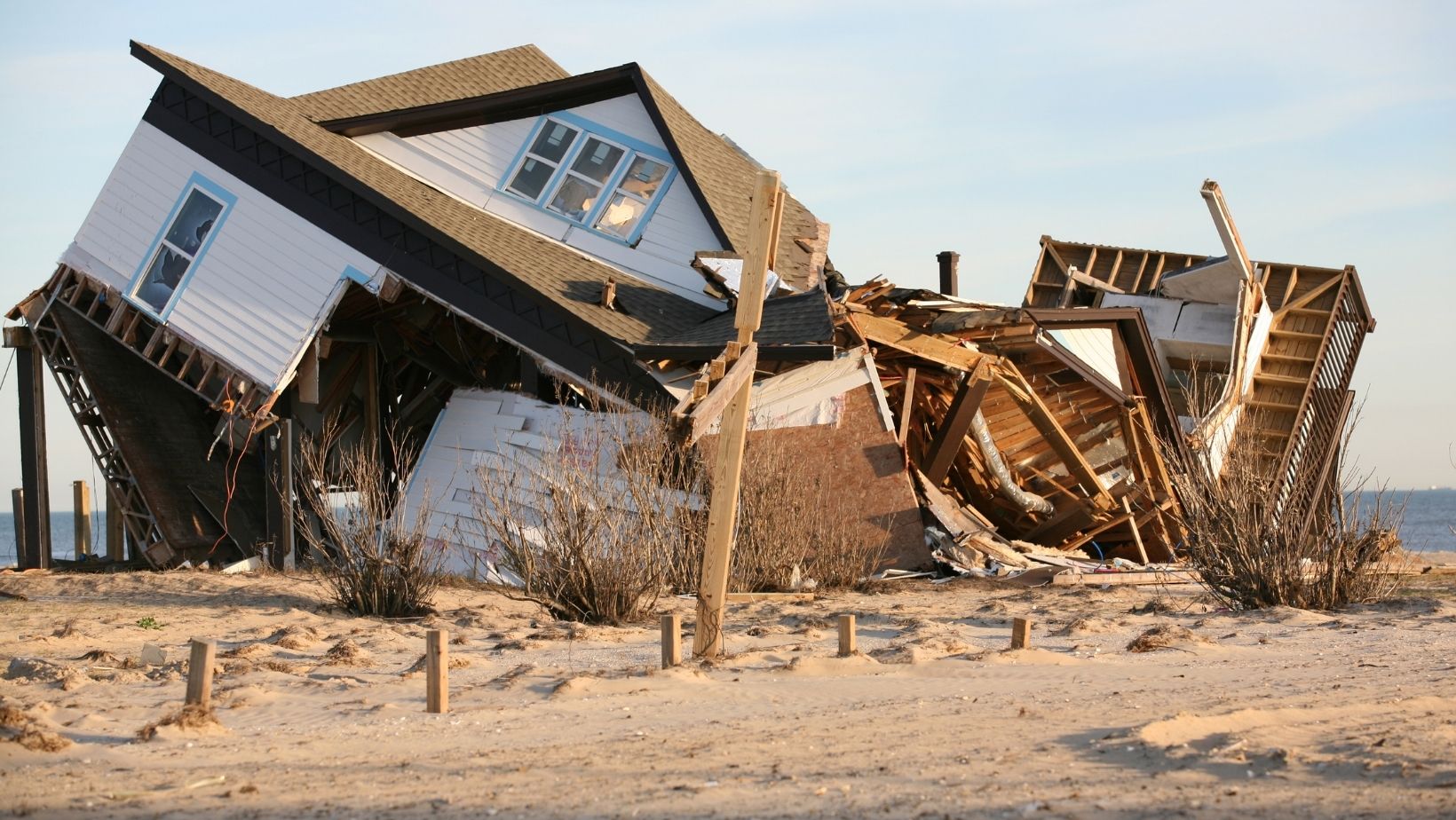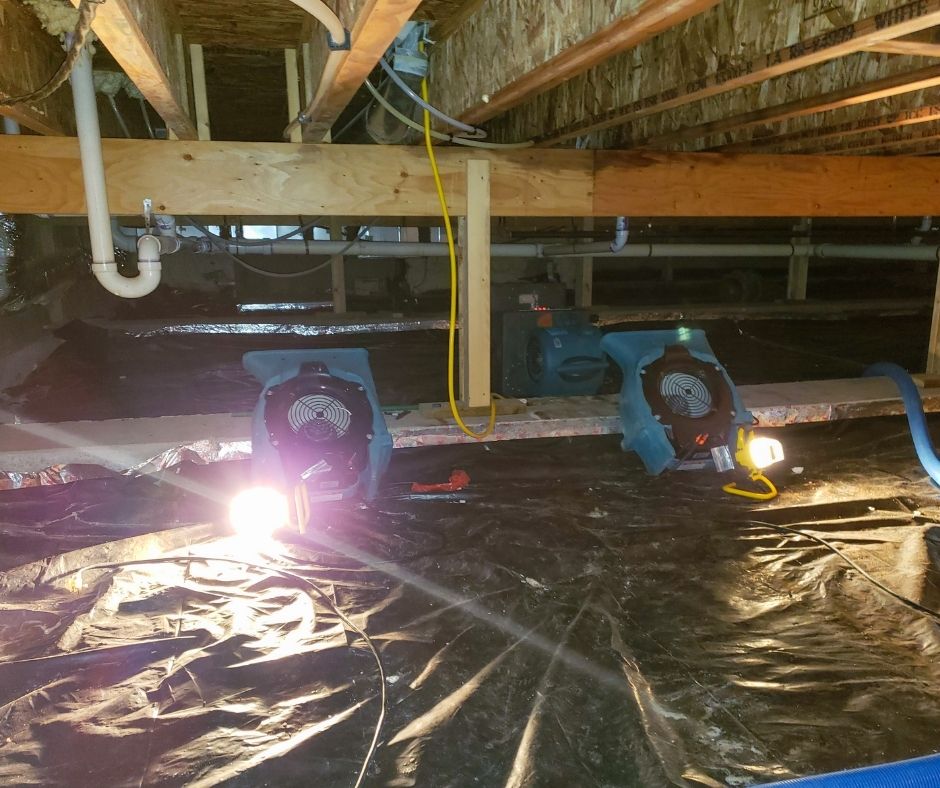
How To Repair Water Damage On Wood, Best Ways To Fix Wood Water Damage
By: 911 Water Damage Experts
Got water-damaged wood? In order to keep your home’s structural design intact, especially in the cases where there is wood involved, you have to be very careful.
Something as minor as a pipe leak can lead to a catastrophe that equals indoor flooding.
In order to get ahead of things, we are able to show you not only how the water damage looks on the wood, but also how to fix some damages yourself!
What can water do to the wood?
 It is a natural thing for the wood to absorb water.
It is a natural thing for the wood to absorb water.
Unfortunately, this is also the reason why the wood can easily rot. The wood weakens, swells, and there’s a good chance hazardous mould will form.
The interesting fact is that not all wood reacts to water in the same way, mostly because of the different densities of different types of wood.
When choosing a wooden floor, you would definitely want to go with the option that absorbs less water when in contact with it.
The hardwood floor is known to be highly resistant to water. Some of those hardwood floor types include white oak, cedar, ipe, California redwood, pine, cypress, teak, etc.
Also, if you want to improve the performance of the wood even further, there are some amazing finishes that fortify the wood against any damage that can be caused by water.
The finish can be anything you wish, starting from oil, wax, lacquer, shellac, varnish, and more.
How to recognize water-damaged wood?
After recognizing which types of wood are more resistant to water, and which ones are not, make sure you are aware of all the wooden structures you have in your home, so not just the floor, but also the ceiling and any other part that you may have.
Look for signs of water damage, especially in the bits where there might be some pipes that may leak. Below we highlight the most common signs of water damage on wood.
Common water-damaged wood sign #1: Check for any discoloration or stain
Whether it is furniture, walls, ceilings, the stains and discoloration can be anywhere. The stains that you see will have a bit of a darker colour, or be a completely different colour, they can be dark yellow, orange, brown or even green. You can even find some light or white discolorations where the water got in touch with the finish on the wood.
Common water-damaged wood sign #2: Inconsistency in texture and shape
This is a pretty easy and obvious one – if there is some damage done to the floor, it would start to sink, bend and become soggy. The floor may even start to rise – a classic way to tell you that there has been some water damage. Same goes for the walls, if they come bending down and start becoming discoloured, you know what has happened. Also if you have any furniture, it might become soggy, start falling apart, start swelling, and thus ruining the entire texture of the piece.
Common water-damaged wood sign #3: Mould is the final warning
If there is excess moisture or water, then the mould will appear. So, in any case, you find a crazy mould on wood, and there are no other signs of water damage, be very wary, everything will surface soon enough.
Distinguishing between damage you can control and damage you can’t
Any water damage that is due to the pipes in your home needs to be brought to the attention of experts in plumbing, no exceptions.
You should not dismiss the damage if it is visible on your walls because “it is not as important as it would be if it happened on the ceiling”. Any water damage is equally alarming and should be repaired straight away.
The one setting where you actually can intervene is the damage done to your furniture.
If this is the case, and you have the necessary tools to repair the damage, then, by all means, go for it! You might not want to throw away a damaged piece of furniture for whatever reason, and we completely understand.
When starting this project, first you need to check what type of damage you are facing.
There are three types of damage, and they are clean water damage, grey water damage, and black water damage.
Clean water damage
This is where the wood still hasn’t really absorbed the water and the only thing you need to do is dry the material thoroughly.
Grey water damage
The next step where it has progressed a bit further and the furniture needs to be taken care of in a more delicate and thorough way.
Black water damage
Now, the black water damage is the damage done from water from sewer backups.
If this is how your furniture has been damaged, then it is deemed unusable and you would need to dispose of it immediately.
Also, make note of the cost and the timeframe required to repair a piece of furniture. If it takes up a lot of your time and a lot of your money, then before starting with this project, ask yourself if it is worth it. If not, the better option would be to just replace it with a brand new piece of furniture.
A step-by-step guide on how to repair wood furniture that was water damaged

If you are one of those people who just loves a challenge and does not give up easily, and you have decided to move ahead with restoring the furniture, here are a few steps that you need to know before diving into the work. Please carefully read and follow these steps for an optimal result.
1. First step – cleaning
Take your furniture outside.
Wear some gloves, and mix two caps of bleach with half a bucket of warm water.
Add three caps of dishwashing soap and thoroughly scrub the furniture with a brush and the mixture.
Rinse and let the piece air dry.
2. Second step – remove the stains
Take a soft white cloth and apply a little bit of wood furniture cleaner.
Do this using circular motions, directly onto the stains on the furniture, until the stains disappear.
3. Third step – sand and strip
Before beginning with this step, put on a mask in order to avoid inhaling wood dust.
Sand the water-damaged areas first, in the direction of the grain, using 220-grit sandpaper.
Continue with the full piece until you get an even layer out. Remove the extra wood dust.
Take a clean brush, and apply a chemical stripping agent to the furniture and let it oxidize.
Then, scrape the surface of the piece with a putty knife.
Finally, in order to remove the excess stripping agent, use 100 or 150-grit sandpaper.
You can use a clean paintbrush to remove the extra wood dust again.
4. Fourth step – glue the loose joints
This one is pretty self-explanatory – make sure to glue all the loose pieces back together carefully with wood glue, and leave the furniture overnight.
5. Fifth step – paint
Choose your preferred colour, take some paint and go over the entire piece of furniture with a clean brush and even strokes.
Leave it to dry, and repeat the process once again.
6. Sixth step – apply the varnish
Make sure you choose a specific type of varnish that is waterproof and insect repellent.
When the colour has fully dried, apply a coat of the varnish and let it dry.
Repeat this process once again and you are done! Congratulations!
If you have any questions about water damage restoration feel free to call us at 1-833-WE-DRY-IT anytime 24/7/365 or feel free to chat with us in near real-time on our Facebook fan page.
Related posts
Step-By-Step Guide: How To Restore Hardwood Flooring After Water Damage
Most Common Mould Removing Mistakes Made By DIYers & Mould Removal Companies
Burst Pipes: How Leaks Can Cause Water Damage
Top Reason Why You Need To Replace Water Damage Carpet
How To Prevent Water Damage During A Storm
Does Water Damage Decrease Home Value? We Got The Answer
Related services
Water Damage Restoration Services
Mould Removal Services
Emergency Water And Sewage Cleanup Services
Fire Damage Restoration Services

